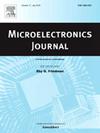Enhanced platform-based interrupt controller for RISC-V MCUs
IF 1.9
3区 工程技术
Q3 ENGINEERING, ELECTRICAL & ELECTRONIC
引用次数: 0
Abstract
Interrupt efficiency including latency is a critical factor in the performance of real-time embedded microcontroller units (MCUs) used for the internet of things (IoT). RISC-V MCUs often suffer from greater interrupt latency due to the extensive software intervention required by the conventional Platform-Level Interrupt Controller (PLIC), in contrast to ARM Cortex-M MCUs that employ hardware-accelerated, vectored interrupt handling. Although the Core Local Interrupt Controller (CLIC) has mitigated some latency issues, its lack of native support in many open-source RISC-V cores restricts its widespread adoption. This work introduces an Enhanced PLIC (EPLIC) that incorporates hardware-accelerated features such as vectored scheduling, context saving and restoration, interrupt nesting, and tail-chaining to optimize the Interrupt Service Routine (ISR). Implemented in the open-source Ibex core, EPLIC not only substantially reduces interrupt latency to 7 clock cycles but also achieves interrupt performance on par with commercial MCUs based on ARM’s Cortex-M processors. This work had been implemented in a smart electricity meter System-on-Chip (SoC).
RISC-V mcu的增强型平台中断控制器
包括延迟在内的中断效率是影响物联网(IoT)实时嵌入式微控制器(mcu)性能的关键因素。与采用硬件加速、矢量中断处理的ARM Cortex-M mcu相比,由于传统的平台级中断控制器(PLIC)需要大量的软件干预,RISC-V mcu经常遭受更大的中断延迟。尽管核心本地中断控制器(CLIC)已经缓解了一些延迟问题,但它在许多开源RISC-V内核中缺乏原生支持,限制了它的广泛采用。这项工作引入了一个增强型PLIC (EPLIC),它结合了硬件加速功能,如矢量调度、上下文保存和恢复、中断嵌套和尾链,以优化中断服务程序(ISR)。在开源的Ibex内核中实现,EPLIC不仅将中断延迟大幅减少到7个时钟周期,而且还实现了与基于ARM Cortex-M处理器的商用mcu相当的中断性能。该工作已在智能电表片上系统(SoC)中实现。
本文章由计算机程序翻译,如有差异,请以英文原文为准。
求助全文
约1分钟内获得全文
求助全文
来源期刊

Microelectronics Journal
工程技术-工程:电子与电气
CiteScore
4.00
自引率
27.30%
发文量
222
审稿时长
43 days
期刊介绍:
Published since 1969, the Microelectronics Journal is an international forum for the dissemination of research and applications of microelectronic systems, circuits, and emerging technologies. Papers published in the Microelectronics Journal have undergone peer review to ensure originality, relevance, and timeliness. The journal thus provides a worldwide, regular, and comprehensive update on microelectronic circuits and systems.
The Microelectronics Journal invites papers describing significant research and applications in all of the areas listed below. Comprehensive review/survey papers covering recent developments will also be considered. The Microelectronics Journal covers circuits and systems. This topic includes but is not limited to: Analog, digital, mixed, and RF circuits and related design methodologies; Logic, architectural, and system level synthesis; Testing, design for testability, built-in self-test; Area, power, and thermal analysis and design; Mixed-domain simulation and design; Embedded systems; Non-von Neumann computing and related technologies and circuits; Design and test of high complexity systems integration; SoC, NoC, SIP, and NIP design and test; 3-D integration design and analysis; Emerging device technologies and circuits, such as FinFETs, SETs, spintronics, SFQ, MTJ, etc.
Application aspects such as signal and image processing including circuits for cryptography, sensors, and actuators including sensor networks, reliability and quality issues, and economic models are also welcome.
 求助内容:
求助内容: 应助结果提醒方式:
应助结果提醒方式:


